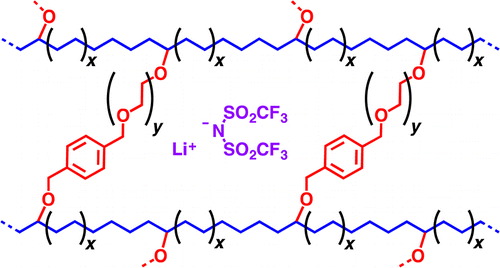In the wake of high-profile battery fires, a safer approach emerges

As news reports of lithium-ion battery (LIB) fires in Boeing Dreamliner planes and Tesla electric cars remind us, these batteries—which are in everyday portable devices, like tablets and smartphones—have their downsides. Now, scientists have designed a safer kind of lithium battery component that is far less likely to catch fire and still promises effective performance. They report their approach in the Journal of the American Chemical Society.
Lynden Archer, Geoffrey Coates and colleagues at Cornell University explain that the danger of LIBs originates with their electrolytes, the substance that allows ions to flow between the electrodes of the battery. The electrolyte usually contains a flammable liquid. To minimize this fire hazard, some researchers are developing more stable, solid electrolytes. But although solid electrolytes are less likely to fuel a fire, their ability to transport ions has fallen short, especially at room temperature. Coates's team set out to tackle both issues and come up with a safer, high-performance battery component, while Archer's team studied the electrochemical characteristics of the materials.
The team's efforts have led to a new family of solid polymer electrolytes that is both good at conducting lithium ions at room temperature and minimizing the risk of fire. Not only are these materials safer than their liquid counterparts in LIBs, but they could also be used in high-energy lithium-metal batteries, such as promising lithium-sulfur and lithium-air batteries.
More information: "Suppression of Lithium Dendrite Growth Using Cross-Linked Polyethylene/Polyethylene Oxide Electrolytes: A New Approach for Practical Lithium-Metal Polymer Batteries" J. Am. Chem. Soc., Article ASAP. DOI: 10.1021/ja502133j
Abstract
Solid polymer electrolyte (SPE) membranes are a critical component of high specific energy rechargeable Li-metal polymer (LMP) batteries. SPEs exhibit low volatility and thus increase the safety of Li-based batteries compared to current state-of-the-art Li-ion batteries that use flammable small-molecule electrolytes. However, most SPEs exhibit low ionic conductivity at room temperature, and often allow the growth of lithium dendrites that short-circuit the batteries. Both of these deficiencies are significant barriers to the commercialization of LMP batteries. Herein we report a cross-linked polyethylene/poly(ethylene oxide) SPE with both high ionic conductivity (>1.0 × 10–4 S/cm at 25 °C) and excellent resistance to dendrite growth. It has been proposed that SPEs with shear moduli of the same order of magnitude as lithium could be used to suppress dendrite growth, leading to increased lifetime and safety for LMP batteries. In contrast to the theoretical predictions, the low-modulus (G′ ≈ 1.0 × 105 Pa at 90 °C) cross-linked SPEs reported herein exhibit remarkable dendrite growth resistance. These results suggest that a high-modulus SPE is not a requirement for the control of dendrite proliferation.
Journal information: Journal of the American Chemical Society
Provided by American Chemical Society


















